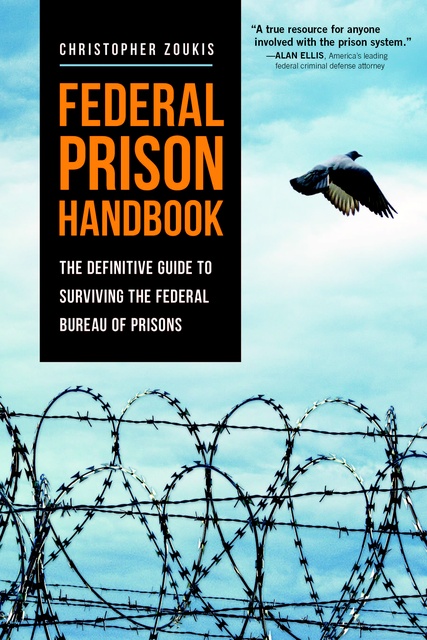SCOTUS Announces Knowingly or Intentionally Causing Bodily Injury or Death by ‘Omission’ Necessarily Involves ‘Use’ of ‘Physical Force’ for Purposes of § 924(c)
The Supreme Court of the United States held that knowingly or intentionally causing bodily injury or death by failing to take action—that is, by omission—uses physical force for purposes of the elements clause of § 924(c).
Background
Salvatore Delligatti was an associate of the Genovese crime family in New York City. In 2014, a local business owner hired him to kill a “neighborhood bully” and alleged police informant named Joseph Bonelli. Delligatti recruited members of a street gang to carry out the killing and provided them with a loaded gun and vehicle. Their plan was to ambush Bonelli as he returned home, but as they waited for him, they abandoned the plan because there were too many potential witnesses in the area. Delligatti instructed them to return the next day to try again; however, the police learned of the plot and arrested the would-be assassins on their way to Bonelli’s home.
Procedural History
Delligatti was charged with multiple offenses, including using or carrying a firearm during or in relation to a “crime of violence” under § 924(c). The predicate crime of violence in the indictment was attempted murder under the violent-crimes-in-aid-of-racketeering (“VICAR”) statute, 18 U.S.C. § 1959(a)(5). Attempted murder under VICAR requires proof that the defendant committed any underlying state or federal crime that constitutes attempted “murder.” The Government argued that the statute applies to Delligatti based on his attempting second-degree murder under New York law, which provides that a person commits second-degree murder when “[w]ith intent to cause the death or another person, he causes the death of such person or of a third person.” N.Y. Penal Law Ann. § 125.25(1) (West 2009).
Delligatti sought to dismiss the § 924(c) charge, arguing that there was no valid predicate crime of violence. The District Court denied his motion, and a jury convicted him on all counts. He was sentenced to 25 years in prison. Delligatti timely appealed.
On appeal to the Second Circuit, Delligatti argued that a VICAR offense based on New York second-degree murder does not satisfy § 924(c)’s elements clause. Under New York law, homicide can be committed by act or omission, which is defined as a failure to perform a legal duty. N.Y. Penal Law Ann. §§ 15.00(3) and 15.10 (West 2009); People v. Steinberg, 595 N.E.2d 845 (N.Y. 1992). A parent who intentionally causes the death of their child by failing to obtain medical care is an example of an omission-based second-degree murder. See People v. Best, 609 N.Y.S.2d 478 (1994). Delligatti’s position was that omission-based crimes do not involve the “use of force.”
The Second Circuit rejected that position in a different case while Delligatti’s case was pending. It held that the “knowing or intentional causation of bodily injury necessarily involves the use of physical force,” even when that harm is caused by the defendant “by omission.” United States v. Scott, 990 F.3d 94 (2d Cir. 2021) (en banc) (quoting United States v. Castleman, 572 U.S. 157 (2014). Based on Scott, the Second Circuit held that New York attempted second-degree murder—and by extension, a VICAR offense based on it—constitutes a crime of violence because it necessarily involves at least the attempted use of force.
The Supreme Court granted certiorari to answer the following question: “whether an individual who knowingly or intentionally causes bodily injury or death by failing to take action uses physical force within the meaning of the elements clause.”
Analysis
The Court provided an overview of § 924(c), which provides for a mandatory minimum prison term of five years for any person who uses or carries a firearm during or in relation to a “crime of violence” to run consecutively with any other sentence of imprisonment. §§ 924(c)(1)(A)(i) and (D)(ii). Under the statute, a felony under federal law qualifies as a predicate crime of violence in one of two ways: (1) elements clause—if the offense “has as an element the use, attempted use, or threatened use of physical force against the person or property of another” or (2) residual clause—if the offense “by its nature, involves a substantial risk that physical force against the person or property of another may be used in the course of committing the offense.” §§ 924(c)(3)(A) and 924(c)(3)(B), respectively. However, the Supreme Court held that the residual clause is unconstitutionally vague in United States v. Davis, 588 U.S. 445 (2019).
The Court noted that it applies a “categorical approach” when determining whether an offense satisfies the elements clause. United States v. Taylor, 596 U.S. 845 (2022). Under the categorical approach, the defendant’s actual conduct is not examined; instead, the relevant analysis is whether the offense at issue “always” involves the use, attempted use, or threatened use of force. Id. If the offense can be committed without any of the three foregoing actions, it does not satisfy the elements clause and thus is not a crime of violence.
The Court began its analysis of the present case by noting: “Castleman establishes that under statutes like the one at issue here it is impossible to deliberately cause physical harm without the use of physical force.”
Castleman focused on § 922(g)(9), which prohibits anyone convicted of “a misdemeanor crime of domestic violence” from owning a firearm. Similar to the elements clause of § 924(c), an offense qualifies under § 922(g)(9) if it “has, as an element, the use … of physical force.” § 921(a)(33)(A). The issue before the Castleman Court was whether an offense for “intentionally or knowingly caus[ing] bodily injury” satisfies that definition.
The Castleman Court concluded that it is “impossible to cause bodily injury without applying force” and held that § 922(g)(9) includes the kind and “degree of force that supports a common-law battery conviction.” That “concept of force” encompasses causing bodily harm indirectly, e.g., “by administering a poison or by infecting with a disease, or even by resort to some intangible substance, such as a laser beam.” Castleman.
Additionally, the Castleman Court held that “the knowing or intentional application of force is a ‘use of force’” under § 922(g)(9). Force in this sense would include, for example, sprinkling “poison in a victim’s drink” because the perpetrator uses force by “employing poison knowingly as a device to cause physical harm,” despite the fact “the act of sprinkling” does not itself involve force. Castleman. Consequently, the Castleman Court explained that any time a person knowingly causes physical harm, they use “force” within the meaning of § 922(g)(9).
Turning to the present case, the Court stated that the “logic of Castleman extends to § 924(c),” reasoning that both statutes apply to offenses involving the “use” of “physical force.” Although the two statutes require different levels of force—that is, battery-level force for § 922(g)(9) and violent force for § 924(c)—because both levels of force can be applied “indirectly,” the different levels of force are “immaterial here,” according to the Court.
The Court then discussed Stokeling v. United States, 586 U.S. 73 (2019), in which the Supreme Court held that violent force encompasses “the ‘force’ required for common-law robbery,” i.e., “the quintessential ACCA-predicate crime.” Common-law robbery merely requires the force required to overcome the victim’s slightest physical resistance, even if it results in “minimal pain or injury.” Stokeling. Thus, the Stokeling Court concluded that any force that actually causes injury or death constitutes “violent force.”
The Court explained that by “pegging ‘physical force’ to robbery, Stokeling makes clear that even the indirect causation of bodily harm requires the use of violent force.” This understanding of force was “well established when Congress enacted § 924(c)’s elements clause in 1986,” the Court stated. See R. Perkins & R. Boyce, Criminal Law 348 (3d ed. 1982) (“[j]ust as battery may be committed by the administration of poison, so the force used to obtain property from a person against his will may be applied internally”). The Court concluded that the knowing or intentional causation of bodily injury necessarily involves the use of physical force under § 924(c) just as it does under § 924(g)(9), adding that there “is no exception to this principle when an offender causes bodily injury by omission rather than affirmative act.” Thus, the Court held that “causing bodily harm by omission requires the use of force.”
Conclusion
New York second-degree murder requires proof that the defendant intentionally caused the “death of another person.” N.Y. Penal Law Ann. § 125.25(1). Naturally, intentionally causing death constitutes the deliberate causing of death. Therefore, the Court held that “second-degree murder in New York—and, by extension, Delligatti’s VICAR offense premised on it—is a crime of violence under § 924(c)’s elements clause.”
Accordingly, the Court affirmed the judgment of the Second Circuit. See: Delligatti v. United States, 145 S. Ct. 797 (2025).
As a digital subscriber to Criminal Legal News, you can access full text and downloads for this and other premium content.
Already a subscriber? Login
Related legal case
Delligatti v. United States
| Year | 2025 |
|---|---|
| Cite | 145 S. Ct. 797 (2025) |
| Level | Supreme Court |




